During the first year of life, the baby changes a lot every month, becoming more and more active. This is why the daily routine of a 10-month-old child differs significantly from the routine of a 6-8-month-old baby. First of all, this concerns sleep patterns - the baby begins to be more and more awake, so parents have to come up with various games to keep him busy. Let's consider the features of the schedule for such a child.
It is very important from an early age to accustom the baby to a certain schedule - this gives him a sense of stability and security in the world, and gives parents the opportunity to plan their time, knowing that the child is sleeping.
Features of the routine
Following a daily routine will help the baby avoid problems with the currently unstable nervous system. It is very important to plan your time so that the baby has the opportunity to get a good night's sleep. At this age, children sleep twice during the day, 1.5-2 hours each, but for some, one nap during the day is enough. Night sleep averages 10 hours, most babies wake up only once, some sleep the entire night, giving mothers the opportunity to enjoy a well-deserved rest.
Let us highlight the main features of the daily routine of a 10-month-old child.
- Getting adequate sleep is the basis of your schedule. The biological rhythms of a particular baby should be taken into account.
- Active games are held in the first half of the day.
- The evening is reserved for creative, educational and intellectual games.
- Massage and gymnastics should be carried out only 40 minutes after eating.
- From early childhood, your baby should be taught hygiene, so water procedures carried out in a fun, relaxed atmosphere are important.
These simple rules will help you avoid mistakes when creating an individual schedule.
Day and night sleep
Most often, 10-month-old babies go to bed at 21 or 22 o'clock and sleep until 6-7 am. There are two daytime dreams:
- from 10 to 11-12;
- from 15 to 16-17.
Sleeping during the day is very important, since children not only restore the strength and energy spent on active games, but also assimilate the acquired knowledge about the world around them.
This schedule best takes into account the characteristics of age, but parents need to focus on their own baby - it also happens that for some children one, but longer, daytime nap is enough.
Some babies are able to fall asleep only after midnight. In this case, the parents most likely did not pay enough attention to the schedule, which caused such a violation. Before kindergarten, you should develop the habit of going to bed around 21-22 hours, gradually shifting the time you go to bed by 10 minutes. The child will “relearn” painlessly in a few weeks.
One of the rituals of going to bed can be to create a special atmosphere of comfort and peace in the evening: the mother bathes the baby, then reads a fairy tale, sings a lullaby. Making noise and swearing is unacceptable now. In addition, pediatricians recommend pre-ventilating the room; this will also contribute to a strong and healthy rest.

Baby's sleep schedule at 10 months
A 10 month old baby's total amount of sleep should be around 11-12 hours. At the same time, the night time should be at least 8 hours, and during the day the child can rest twice for 1-1.5 hours. The duration of daytime sleep depends on how active your waking hours have been. Therefore, if your baby is very tired, do not be surprised if he sleeps for a full 2 hours during the day. As for night time, children can often sleep without waking up until the morning, it depends on how well he walked and ate.

However, at the same time, do not overdo it with emotions: if the baby gets overexcited before bed, it will be very difficult to put him to sleep. It is very important to pay due attention to rest, because during this time the baby’s muscles relax, he restores all the energy he spent, and the brain absorbs all the information received. Surely you know that if the baby sleeps well, then he will be able to eat and play just as well. You could even say that the mood of the whole family depends on the child’s quality sleep.
Another interesting fact about baby sleep. Modern scientists have conducted research and proven that the position in which a baby sleeps can say a lot about his physical and psychological state:
- So, for example, if he sleeps on his side, then nothing scares him and he feels comfortable.
- If the baby sleeps on his stomach, then parents should take a closer look. Perhaps your baby is worried about a runny nose or increased gas production. In addition, children who feel fear or perhaps lack parental love and attention sleep in this position.
- If during sleep the baby pulls his knees to his chest, then this is also a signal that he is worried about pain in the abdomen, or the baby is experiencing fear.
It is very difficult to say for sure whether this is true, and whether this information is truly universal and suitable for every child. But you can still take a closer look and observe your baby, perhaps you will see something special in his sleeping position.
Baby's diet
Ten-month-old babies should eat only healthy foods, so it is important for parents to approach feeding wisely. You can give your baby vegetables and fruits - they should first be cut into small pieces that are convenient for him. In addition, they can be boiled or baked.
It is acceptable to offer your baby the following products:
- White cabbage;
- zucchini;
- cauliflower;
- potato;
- broccoli;
- beet;
- carrot;
- pumpkin;
- spinach.
Some parents, wanting to form the habit of chewing in their baby, add pieces of fruit or vegetables to the puree. At this age, the child already has 2-3 teeth, so most often he copes with a new task without any special difficulties.
Greens, which are recommended to be added to soups, are also useful for the baby (it is too early to offer them in their pure form). Each vegetable is first given to try, then the baby’s reaction is observed. If everything is in order, in the future you can prepare a mixture of various components for him.
However, it is better not to experiment with exotic fruits (kiwi, pineapple) and some berries (raspberries, strawberries): they can cause an allergic reaction.
The “allowed” fruits and berries include:
- apples;
- bananas;
- pears;
- apricots;
- peaches;
- plums
Fruits can be added to porridge or cottage cheese to improve the taste, or boiled or made into compotes.
At this age, the baby eats 5 times a day. Typically, 3-4 hours should pass between feedings. In this case, it does not matter whether the baby is breastfed or has switched to formula.
The diet should be balanced and varied and include the following food groups:
- porridge (rice, corn, buckwheat, in the absence of allergic manifestations and oatmeal) - they can be cooked either in water or in mother’s milk or formula;
- meat (veal, turkey, rabbit, chicken) in the form of minced meat, soufflé or puree;
- cottage cheese, kefir, natural yogurt;
- special pasta for babies.
Approximate diet for 10 months. presented in the table.
| Time | Name | Sample menu |
| 6:00-7:00 hours | First breakfast | Mother's milk or artificial formula (200-210 ml). |
| 9:00 | Lunch | Milk porridge, cookies for children, juice. |
| 12:00-13:30 | Dinner | Chicken soup, puree (vegetable or meat), compote |
| 16:00 | Afternoon snack | Cottage cheese or yogurt, fruit |
| 19:30-20:00 | Dinner | Boiled carrots in pieces, meat puree, pasta. |
| 21:00-22:00 | Second dinner before bed | Milk or formula |
In general, the baby’s diet for 10 months includes more and more adult food, and new products appear. You can give him fish fillet (boneless), white or red (trout is especially good), and it is permissible to introduce him to offal (liver, heart).
Children can drink the following drinks:
- water;
- juices diluted with water in a 1:1 ratio (consumed in pure form may cause irritation of the mucous membrane);
- compotes;
- jelly.
It is also important to take into account the baby’s taste preferences and not force him to eat foods he doesn’t like. You should feed your baby by the hour, at the same time, so that it becomes a habit. It is very important to come up with and implement your own ritual that will help the baby get in the mood for eating. This could be putting him on a nice bright bib, using his favorite cup or cutlery.
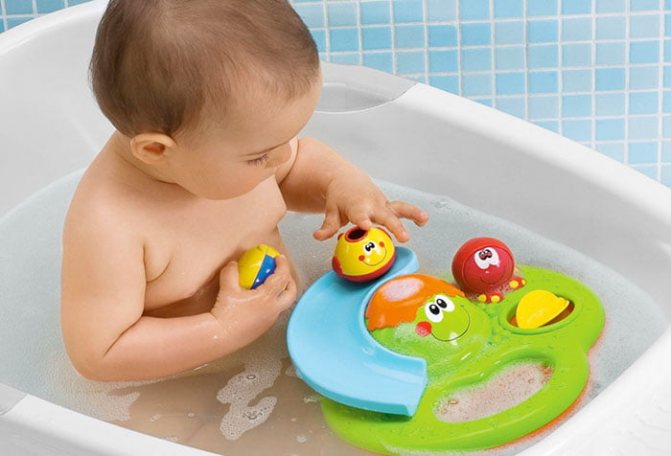
Hygiene procedures
A ten-month-old baby can already be introduced to the potty. The easiest way to start is by planting the baby on it immediately after waking up. Forcibly forcing a child to sit until he “does the job” is unacceptable; the maximum time can be 10 minutes. If the potty is used correctly, you need to praise the child. There is no need to distract him with toys and conversations, otherwise the baby will get confused and will not be able to figure out why he was put on such an unusual “chair.”
Many children begin to walk, so they fall, get dirty, and in addition, their sweat glands begin to function more actively, which is why they now need to be bathed every day. After the bath, the mother can please the baby with a soothing massage, including rubbing and stroking.
The following procedures should also be carried out regularly:
- wash your face every day;
- cut nails once every 7 days;
- comb your hair after each wash;
- Wash with soap after each potty visit or when changing a diaper.
If the apartment is cold, then it is allowed to bathe the baby not every day, but 3-4 times a week. To prevent water procedures from frightening your baby, you can play with him: fill the bath with water and throw several rubber ducks into it, give the baby molds and show how easy it is to pour liquid from one to another. All this will help him have fun. Before going to the bathroom, you can create a play situation by telling your child that now we are going to launch ducks or pour water into bottles.

Physical exercise
It is imperative to include active games and exercises in the routine of a 10-month-old baby, since children at this age already have all the necessary skills and abilities:
- crawl, and at a good speed;
- able to sit;
- stand holding onto a support;
- many are starting to walk.
That is why it is necessary to strengthen the baby’s muscles, offer him to do morning exercises, which include several simple exercises:
- bending and straightening the legs at the knees;
- circular rotations with handles;
- raising straight legs and holding them;
- turns on the stomach;
- lifting the body while lying on the back (the mother holds the baby by the arms and gently pulls him so that the body rises above the surface of the crib);
- squats, while the baby holds on to the gymnastic rings.
After morning exercises, a massage will also be useful.
You should teach your child to get off the couch correctly to avoid bruises and injuries. To do this, the baby is placed on his stomach and shown how to lower his legs and carefully slide off the edge. After which the exercise is repeated several times a day. To prevent your child from getting bored, you should actively use his favorite toys, which also provide exercise.
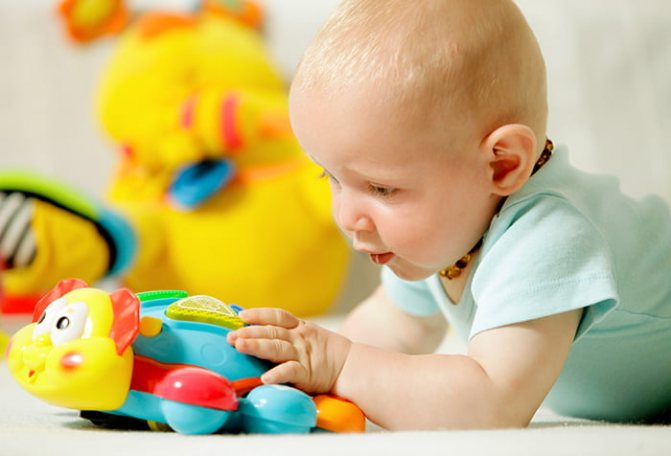
Wakefulness
Many children at this age can not only sit and crawl, but can already stand up, holding onto support, and some can even begin to walk on their own. Your baby is still interested in all bright objects, as well as those that perform any actions or sing.

Many parents forbid their children to touch certain objects, constantly saying: this is not allowed, don’t touch it, etc. However, let’s think - after all, the child is learning, he is learning about the world. How will he know what, for example, a spoon is and what is done with it if he cannot hold it in his hands? Before you prohibit, think about whether the item your baby wants to take is really that dangerous. Place all those objects that he does not want to take, for example, a knife, something hot or easily breakable, or heavy, so that he cannot reach them. And don’t forbid him to take everything else, because this is how he learns about the world.
Now you can take a bright pencil or felt-tip pen and show your little one that they can draw with it. I am sure that a child of 10 months will be drawn into a new game with special excitement. In addition, you can buy him cubes and pyramids and put them together at home. You can buy or print photographs of various animals and cartoon characters from the Internet and teach with your child, for example, which fairy tale or cartoon this or that animal or character is from.
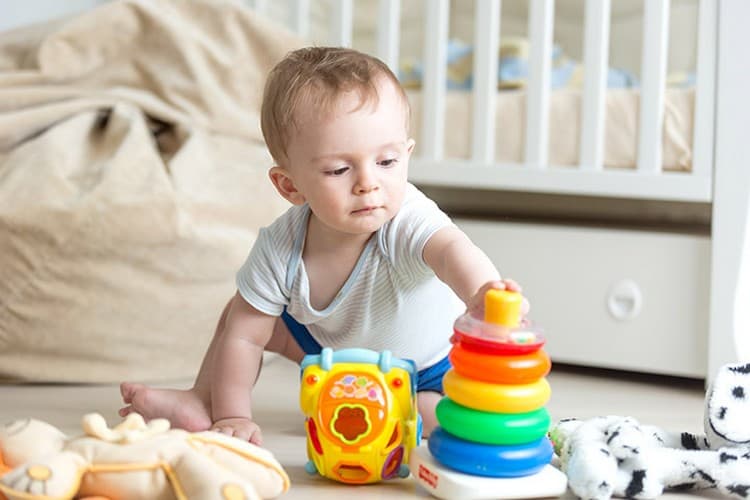
Talk to your baby often - now is the time to try to start speaking in simple syllables, for example, ma-ma, pa-pa, ba-ba, bee-bee, boo, etc. Repeat them when you walk with the baby, and very soon time, I think you will hear the long-awaited word “mother” addressed to you.
Educational games
It is very important for children at 10 months to engage in useful games that will help develop intelligence and thinking, and gain skills useful for later life.
At this age, kids enjoy drawing, so the mother can give them pencils and a sheet of paper so that the baby can draw his first doodles in his life.
In addition, the following games will be useful:
- Build a tower from cubes or assemble a pyramid from rings.
- Sing children's songs.
- Together with the baby, pronounce the simplest syllables (ma, pa, ba).
- Look at pictures of animals or plants (they must be bright and beautiful), talk about each of them. At first glance, the child is not yet able to understand much, but all the information will be deposited in his memory. In addition, by listening to his mother’s speech, he will quickly learn to speak and enrich his passive vocabulary.
- Reading fairy tales and poetry is useful for the same reasons.
- Modeling classes will help improve fine motor skills, so you can buy special soft plasticine and show your little one how, for example, to sculpt simple figures.
All this will be useful for the baby, it will help improve his memory and thinking, prepare him for speech development, and parents will be able to watch how their child makes his first successes in creativity. However, you should not overtire your baby, much less try to develop him when he is sick or tired. Classes should be conducted in an easy, relaxed playful manner, then pleasure and benefits are guaranteed.
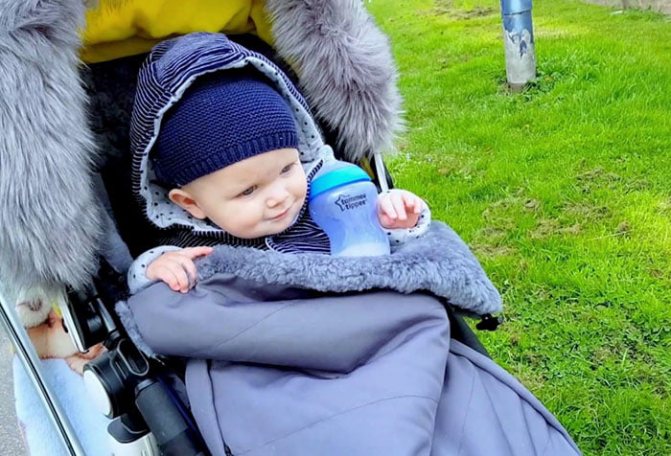
Baby's diet at 10 months
Your worries and questions regarding diet during breastfeeding are a thing of the past a long time ago. Not long ago you tried to introduce the first complementary foods. In fact, by this time it is no longer even so important what you started complementary feeding with: porridge or vegetable purees. At the age of 10 months, a child should eat about 5 times a day.
Of course, it’s best for you, as parents, to know what portions your baby should have. The main guideline is his temperament. If the baby is active, then his portions will be an order of magnitude larger than those of calm children. The baby's diet should include meat and vegetable purees, gluten-free cereals - corn, buckwheat and rice, fresh fruits and vegetables, and dairy products. In addition, at this age, pasta, homemade cakes, hard fruits and vegetables are already allowed, since the baby has teeth and can easily chew the food received.
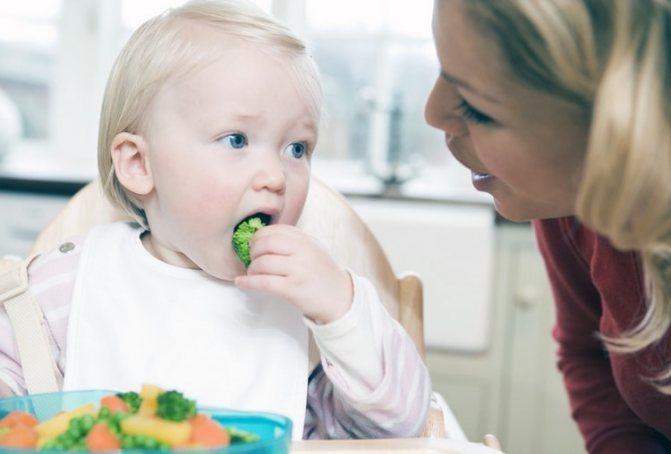
You can also give your baby a hard-boiled egg. It is no longer necessary to separate the white from the yolk; at 10 months it is allowed to give the whole egg. However, be careful, remember that some products tend to weaken, and some strengthen. For example, plums and apricots can cause your baby to have loose stools when breastfeeding. But frequent consumption of rice porridge or pears can lead to the baby becoming constipated while breastfeeding. Therefore, always remember about variety: in no case should you feed the same product or dish for a long time.
To prevent your child from getting bored with the monotonous menu, you can give porridge along with fruits, vegetables or cottage cheese. At the same time, do not forget that you can start introducing a new product into your diet with a small spoon or even on the tip of a knife. As for the regime, try to give your baby porridge in the morning, soup for lunch, and yogurt or cottage cheese for an afternoon snack. Over time, the number of snacks will decrease, but the habit of eating porridge for breakfast will remain.
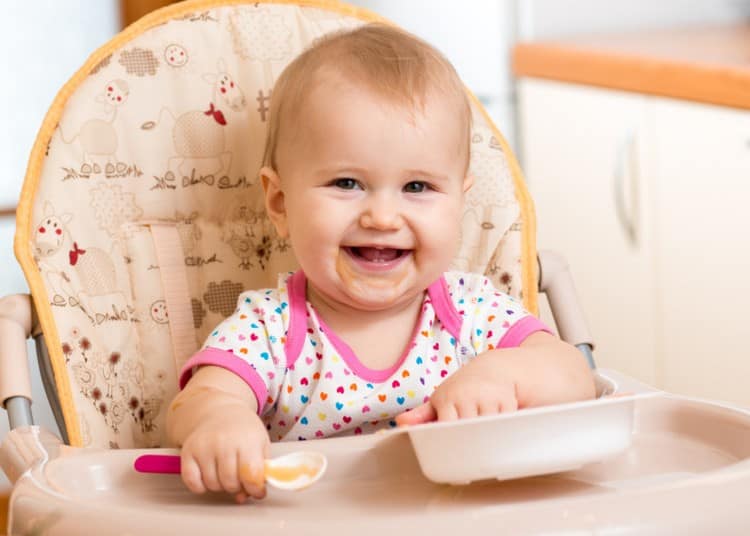
Walks
Another important element of a 10-month-old baby’s daily routine is regular walks in the fresh air, the duration of which should be at least 2 hours a day.
It is best to go outside in 2 stages:
- until 11:00, while it’s not hot;
- after 18:00, when the heat becomes imperceptible.
In winter, it is permissible to walk once. Many parents, fearing that bad weather may cause their baby to get sick, try not to go out with him if it is cold or damp outside. Pediatricians assure that such weather conditions will help strengthen the body and harden the baby, so he should be dressed warmly and take a walk.

What changes do you have in your daily routine at 10 months?

They learn about their surroundings, and parents have to play with them more. But the baby’s schedule at 10 months almost completely coincides with the schedule of a 9-month-old baby. Daily sleep should also be at least 12 hours, including 2 periods of sleep during the day.
The child should be provided with 5 meals a day, walk with him in the fresh air, play educational and active games.
Typical mode
The table below shows a schedule option for 10 months. Parents can take it as a basis and adapt it to the biological rhythms of their baby.
| Time | Procedure |
| 6:00-6:30 | Waking up and first feeding (breast or formula) |
| 6:30-7:00 | Hygiene procedures (washing, washing, brushing teeth with silicone finger brushes) |
| 7:30-8:00 | Games with cubes or pyramids, drawing. |
| 8:-00-8:30 | Morning exercises and massage |
| 8:30-8:50 | Educational games |
| 8:50-10:00 | Games with cubes and toys |
| 10:00-10:30 | Breakfast |
| 10:30-12:00 | Daytime nap |
| 12:00-13:30 | Walk |
| 13:30-14:00 | Dinner |
| 14:00-15:30 | Games with toys, educational activities |
| 15:30-16:00 | Afternoon snack |
| 16:00-17:30 | Daytime nap |
| 17:30-18:00 | Dinner |
| 18:00-19:30 | Walk |
| 19:30-20:30 | Games (not active) |
| 20:30-21:30 | Hygiene procedures, relaxing massage |
| 21:30-22:00 | Second dinner (breast milk or formula) |
| 22:00-6:00 | Dream |
If you follow a daily routine, it will be much easier to create conditions for the normal development of the baby; he will sleep the required number of hours, at the same time relaxing and “digesting” the information received during the day, play active games, improve his skills and abilities, and receive all the necessary vitamins with food and minerals.










